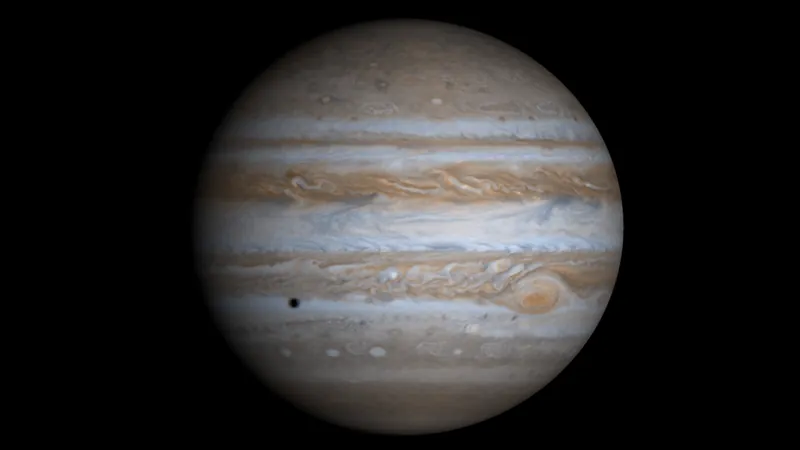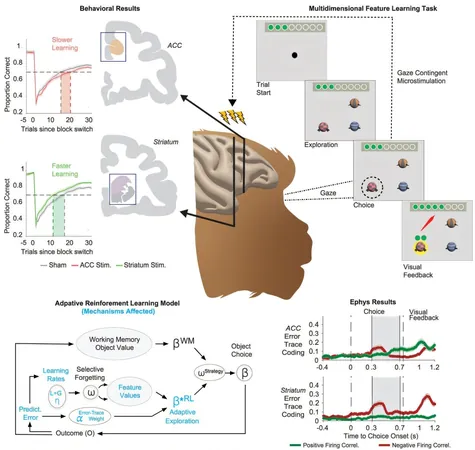
Unveiling Jupiter's Massive Past: The Planet That Could Hold 2,000 Earths!
2025-05-21
Author: Nur
Jupiter's Stunning Transformation Revealed!
Long before Jupiter became the colossal giant we observe today, it existed in a form that was truly astonishing. According to groundbreaking research, this gas giant was once twice its current size and boasted a magnetic field at least 50 times stronger!
A Glimpse into the Past: Jupiter's Early Years
Published in the prestigious journal Nature Astronomy on May 20, the study dives deep into the early stages of our solar system, revealing that just 3.8 million years after the formation of the first solid objects, Jupiter's dimensions were immense. Lead researcher, professor Konstantin Batygin from the California Institute of Technology, explains, "Our ultimate goal is to understand where we come from, and pinning down the early phases of planet formation is essential to solving the puzzle." This study is not just about Jupiter; it aims to illuminate the formation of the entire solar system!
How Did They Uncover This Giant's Secrets?
Instead of relying on traditional planetary formation models, Batygin and his team turned their attention to Jupiter's lesser-known moons: Amalthea and Thebe. These small satellites orbit dangerously close to the giant planet and follow slightly tilted orbits—an indication that they have remained stable since the dawn of our solar system. By examining these subtle orbital shifts, the researchers managed to reverse-engineer details about Jupiter's primordial size and magnetic strength.
Mind-Blowing Scale: Jupiter's Massive Volume!
The calculations indicate that ancient Jupiter had a radius nearly double that of today’s planet, with a volume sufficient to contain over 2,000 Earths. For comparison, the current Jupiter can fit about 1,321 Earths within it!
The Impact of Jupiter's Formation on Our Solar System
While the study does not intricately detail how a massive Jupiter would have influenced its surroundings, it highlights the significance of the planet's formation and evolution in sculpting the solar system's overall structure. Batygin notes that these findings capture Jupiter at a crucial moment when the gaseous remnants from the Sun's formation began to disperse, marking the end of planet formation and solidifying the solar system's layout.
A Groundbreaking Insight into Our Cosmic Heritage
As Batygin states, "What we've established here is a valuable benchmark. A point from which we can more confidently reconstruct the evolution of our solar system." This exciting research opens new avenues for exploring the origins of not just Jupiter, but the very fabric of our cosmic neighborhood!



 Brasil (PT)
Brasil (PT)
 Canada (EN)
Canada (EN)
 Chile (ES)
Chile (ES)
 Česko (CS)
Česko (CS)
 대한민국 (KO)
대한민국 (KO)
 España (ES)
España (ES)
 France (FR)
France (FR)
 Hong Kong (EN)
Hong Kong (EN)
 Italia (IT)
Italia (IT)
 日本 (JA)
日本 (JA)
 Magyarország (HU)
Magyarország (HU)
 Norge (NO)
Norge (NO)
 Polska (PL)
Polska (PL)
 Schweiz (DE)
Schweiz (DE)
 Singapore (EN)
Singapore (EN)
 Sverige (SV)
Sverige (SV)
 Suomi (FI)
Suomi (FI)
 Türkiye (TR)
Türkiye (TR)
 الإمارات العربية المتحدة (AR)
الإمارات العربية المتحدة (AR)